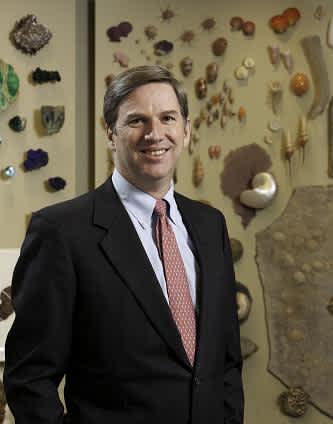Dr. Cristián Samper Begins His Tenure as President and CEO of the Wildlife Conservation Society
OutdoorHub 08.01.12

Dr. Cristián Samper begins his tenure today as President and CEO of the Wildlife Conservation Society. Dr. Samper, a scientist and an international authority on conservation biology and environmental policy, follows Dr. Steven E. Sanderson, who retired as WCS President and CEO on July 1.
Dr. Samper joins WCS after serving as Director of the Smithsonian Institution’s National Museum of Natural History in Washington, DC since 2003. The WCS Board of Trustees announced the appointment of Dr. Samper in January.
Said Dr. Samper: “I have admired the work of WCS for many years and am honored to join a talented and dedicated team of staff and partners. WCS is unique among environmental groups in our ability to connect millions of people to nature through our zoos and aquarium, and at the same time helping conserve wildlife and wild places around the world. As a tropical biologist, I recognize the urgent need to conserve the natural and cultural diversity of this planet. It is my goal to contribute to these vital efforts as head of the Wildlife Conservation Society.”
“On behalf of the WCS Board of Trustees, I want to welcome Cristián to WCS, which has grown under Steve’s leadership to be the world’s preeminent science-based conservation organization,” said Ward W. Woods, Chair of the WCS Board. “Cristián’s strong background in conservation biology, sound management, and fundraising make him a perfect fit to lead WCS well into the future.”
Soon after joining WCS, Dr. Samper will deliver the keynote address at the upcoming IUCN World Conservation Congress to be held in Jeju, South Korea from September 6-15. The IUCN World Conservation Congress is the world’s largest and most important conservation event, held every four years.
As Director of the Smithsonian Institution’s National Museum of Natural History, Dr. Samper ran the largest natural history collection in the world, with more than 126 million specimens and artifacts. During his tenure at the Smithsonian, Dr. Samper: reinvigorated the research staff by hiring new curators to replace retiring staff; established an endowed fellowship program; built major new collections, storage facilities, and laboratories; and raised more than $150 million to support new long-term exhibitions and programs, including the Encyclopedia of Life and the Sant Ocean Hall. Samper was Acting Secretary of the Smithsonian from March 2007 until July 2008, when he returned to the Museum of Natural History.
Before moving to Washington, Dr. Samper was deputy director and staff scientist at the Smithsonian Tropical Research Institute in Panama from 2001 to 2003. Further, Dr. Samper served as director of the environment division of the Foundation for Higher Education in Colombia in the early 1990s and was the moving force behind establishing a network of private reserves in that country.
Born in San José, Costa Rica and raised in Colombia, Dr. Samper studied biology at the Universidad de Los Andes in Bogotá and earned his master’s and doctorate degrees in biology from Harvard University, where he was awarded the Derek Bok prize for excellence in teaching.

